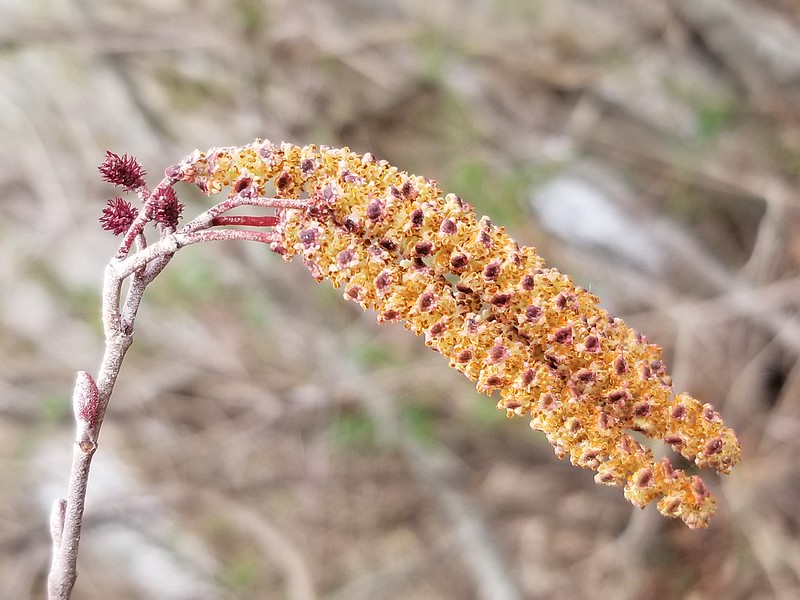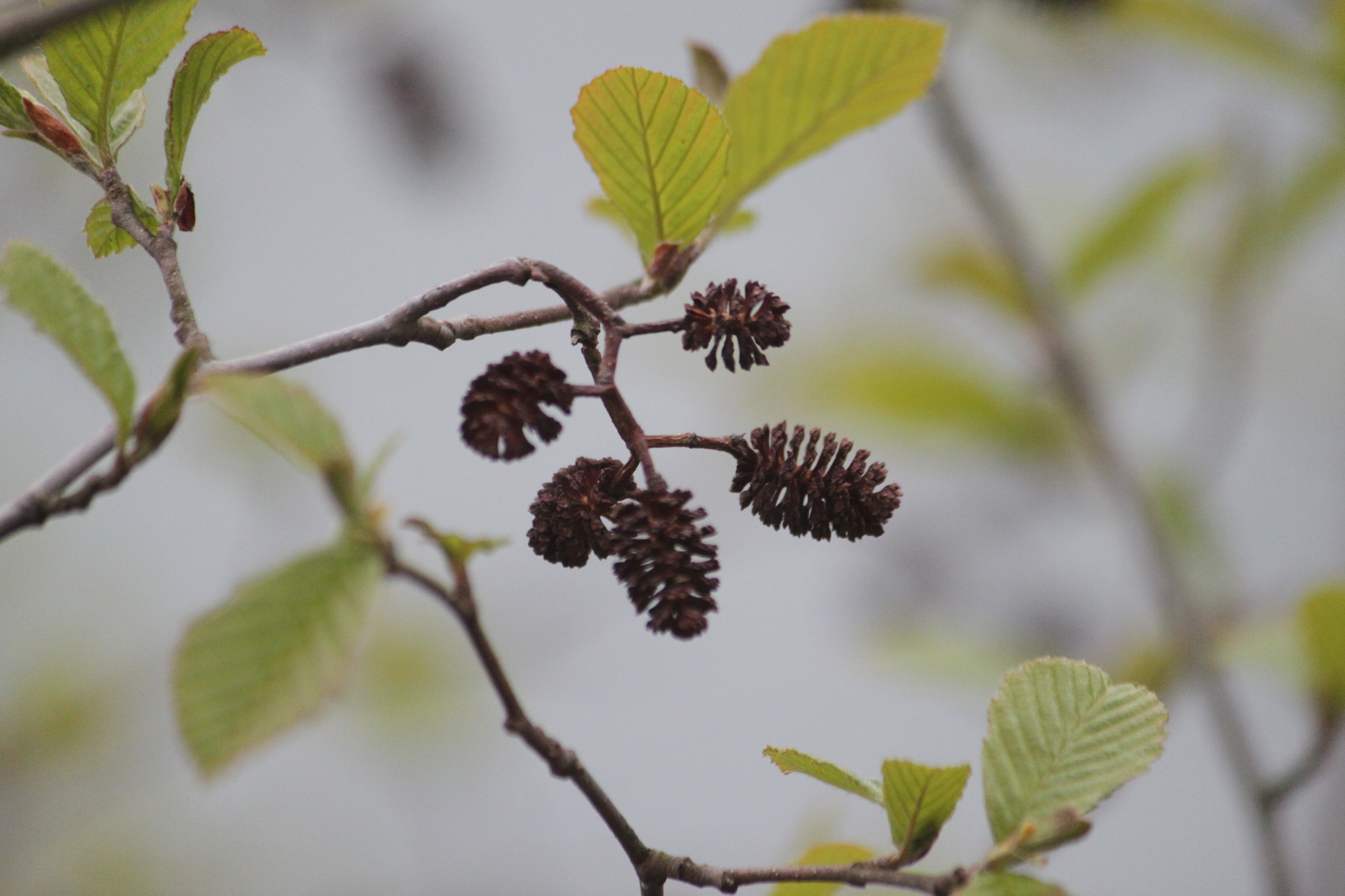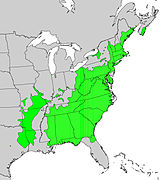Hazel Alder
Alnus serrulata (Aiton) Willd.
Description
Hazel alder, also called brookside alder 6, tag alder or smooth alder ¹, is a member of the birch family (Betulaceae). It is a small tree, seldom more than 20 tall. ² It has smooth bark (hence its other common name) and inconspicuous lenticels or pores. ¹ Leaves are oval, 2 to 4 inches long by 1.5 to 2.5 inches wide, with serrate or double-senate margins. Flowers are borne in catkins with separate male and female flowers on the same tree. The male catkins are 2 to 4 inches long, yellow and hang down in clusters of 2 to 5. ² Female catkins are less than 1 inch long, red and are erect. ² Fruits are cone-like, brown structures about 1 inch long that persist into the winter and bear numerous winged seeds. ¹

Erect red female catkins and drooping yellow male catkins of hazel alder in spring. Maryland Biodiversity Project, S. Muller ³

Female fruits of previous year. Maryland Biodiversity Project, P. Martin ³
Distribution
Hazel alder is distributed from the Saint Laurence River system to the Great Lakes and South to Texas and Florida. It is found in wetlands. 4 In Maryland hazel alder is found throughout the state in moist areas along streams and flood plains. ³

Native range of hazel alder. Wikimedia Commons 5
Wildlife Importance
Numerous insects feed upon hazel alder including the flea beetle, leaf beetle, and leaf hoppers. 6 Numerous birds consume seeds and/or buds including American Wigen, Red-breasted Grosbeak, and Pine Siskin. 6 American beaver utilize the wood and bark for food and stems for dam construction. 6
Economic Importance
Hazel alder is used for stream bank stabilization. 7
Threats
Hazel alder is susceptible to canker and powdery mildew. ¹
Interesting Facts
- Root nodules of hazel alder fix nitrogen ², one of only a new non-luminous plants that have this ability.
- Native Americans had numerous uses of hazel alder including to reduce the pain of childbirth, for coughs and fevers and to lower blood pressure. 4
- In earlier works Alnus serrulata was mistakenly called Alnus rugosa, a name that has unfortunately persisted. 4
References
- North Carolina Extension: Alnus serrulata
- Missouri Botanical Gardens: Alnus serrulata
- Maryland Biodiversity Project; Smooth alder
- Flora of North America: Alnus serrulata
- Wikimedia Commons: Alnus serrulata
- Illinois Wildflowers: Brookside alder
- Plants for a Future: Alnus serrulata
Contributed by J. Hull
Towson University Glen Arboretum
